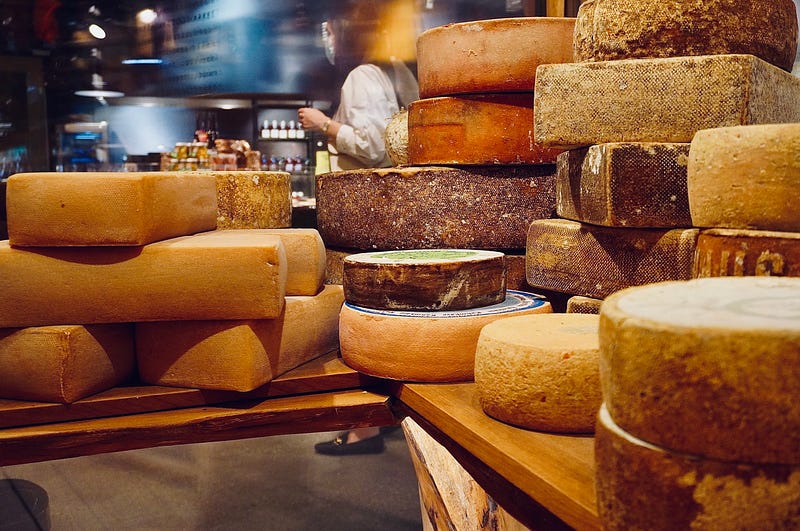The Fascinating Reality of Lactose Intolerance in Humans
Written on
Chapter 1: Understanding Lactose Intolerance
Lactose intolerance is a condition that affects many individuals globally, yet humans remain the only mammals that consume dairy into adulthood.

During my college years, I mistakenly believed I had developed an ulcer due to persistent stomach pains, which were often accompanied by bloating and burping. In an era before the internet, I consulted textbooks to diagnose my symptoms, concluding it was likely acid reflux, exacerbated by the stress of my pre-med studies and work commitments. I read that dairy could "neutralize" stomach acid, which seemed like the perfect solution since ice cream was my favorite treat. However, instead of relief, my symptoms intensified, leading to diarrhea and gas that could rival even the strongest odors.
Seeking advice from a medical student in my lab, I was met with a confident diagnosis: “Lactose intolerance.” Naturally, I inquired about possible treatments. In those days, without options like Lactaid, the answer was grim—“Stop consuming dairy.” This felt like a death sentence to me, as my Midwestern diet was heavily reliant on creamy foods.
Lactose intolerance occurs when the body lacks lactase, the enzyme required to digest lactose, the sugar in dairy products such as milk and cheese. When lactose isn't properly digested, it ferments in the colon, leading to uncomfortable symptoms like bloating, flatulence, nausea, and diarrhea. While some individuals experience mild symptoms, others endure significant discomfort.
Surprisingly, most infants produce ample lactase to digest breast milk. However, once weaning occurs, lactase production significantly decreases. This raises the question: how do we enjoy our favorite dairy products? The reality is, many people struggle with lactose intolerance.
Globally, it’s estimated that around 68% of the population cannot properly digest lactose, with notable regional differences. For example, countries like Ghana, Malawi, and South Korea report a staggering 100% prevalence of lactose intolerance. In contrast, nations such as Denmark and Ireland boast much lower rates, around 4% to 8%.
The consumption of dairy doesn't necessarily correlate with lactase persistence. A recent mutation in the LCT gene allows certain individuals to digest lactose into adulthood. Historical evidence suggests that earlier populations, including European farmers, lacked this ability and often suffered from the consequences of undigested dairy until they faced food shortages. Those who could digest lactose survived better and passed on this trait to future generations, leading to the current scenario where only about one-third of the global population can enjoy dairy without issue.

So, why is dairy consumption so prevalent, particularly in the U.S., where 36% of the population is lactose intolerant? From an early age, we're taught that dairy is an essential food group, often touted as a significant source of calcium and Vitamin D. However, many of these nutrients are artificially added, and alternatives like spinach or figs contain comparable levels of calcium. Additionally, the saturated fat content in dairy can be detrimental to our health.
It appears we may have been misled about the benefits of dairy. The dairy industry's rise in the early 1900s coincided with industrialization and health movements promoting milk as a nutrient-rich food. Despite its historical risks—prior to pasteurization and refrigeration—milk was heralded as the "perfect food" due to the collaboration of government, scientists, and dairy farmers.
As you relish that creamy burrata or cheese-laden dish, remember: that milk was never meant for you; it was intended for baby calves.
Chapter 2: The Global Perspective on Lactose Intolerance
This video explains why lactose intolerance is prevalent in many populations and explores its impact on health and diet.
In this informative video, the reasons behind lactose intolerance are discussed, shedding light on its biological and cultural implications.